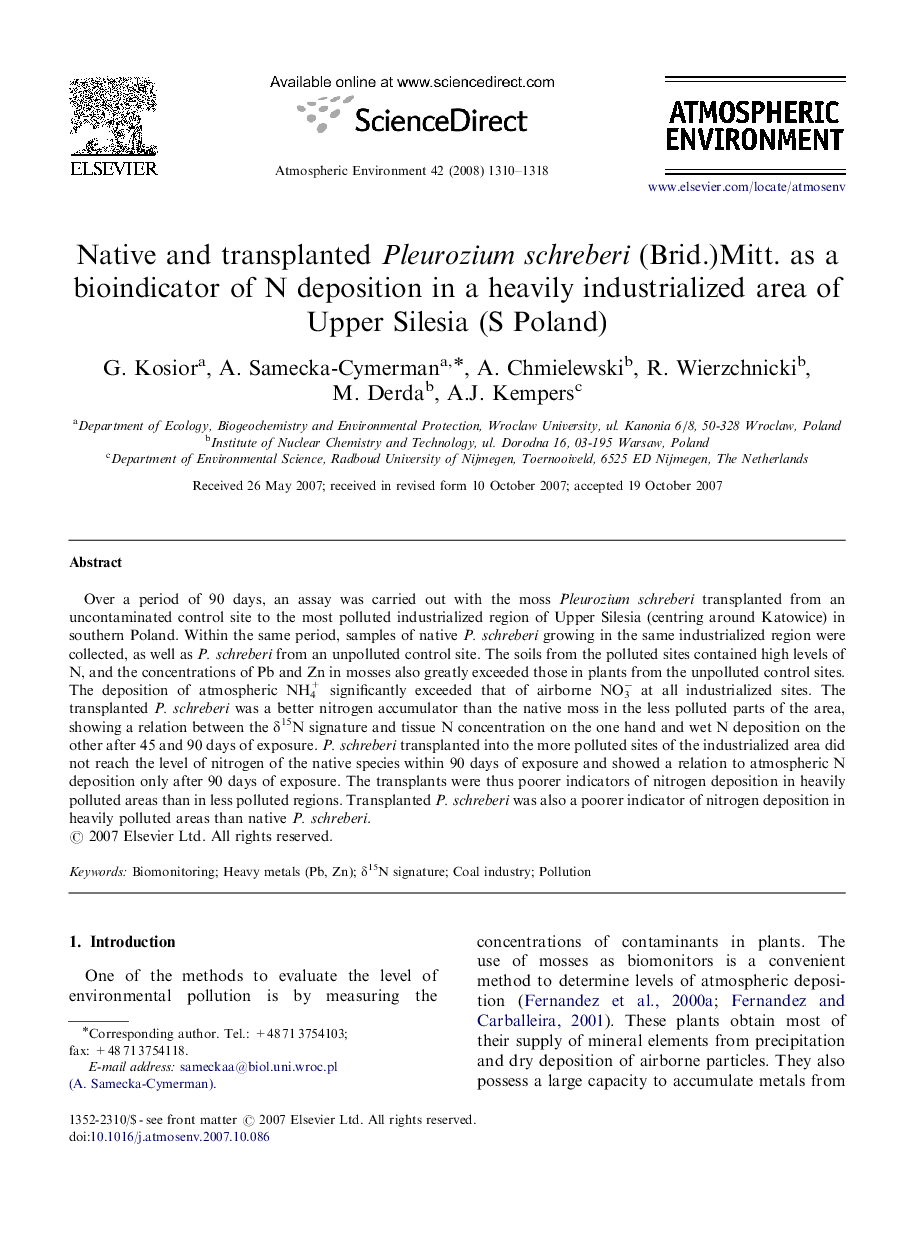| Article ID | Journal | Published Year | Pages | File Type |
|---|---|---|---|---|
| 4442797 | Atmospheric Environment | 2008 | 9 Pages |
Abstract
Over a period of 90 days, an assay was carried out with the moss Pleurozium schreberi transplanted from an uncontaminated control site to the most polluted industrialized region of Upper Silesia (centring around Katowice) in southern Poland. Within the same period, samples of native P. schreberi growing in the same industrialized region were collected, as well as P. schreberi from an unpolluted control site. The soils from the polluted sites contained high levels of N, and the concentrations of Pb and Zn in mosses also greatly exceeded those in plants from the unpolluted control sites. The deposition of atmospheric NH4+ significantly exceeded that of airborne NO3â at all industrialized sites. The transplanted P. schreberi was a better nitrogen accumulator than the native moss in the less polluted parts of the area, showing a relation between the δ15N signature and tissue N concentration on the one hand and wet N deposition on the other after 45 and 90 days of exposure. P. schreberi transplanted into the more polluted sites of the industrialized area did not reach the level of nitrogen of the native species within 90 days of exposure and showed a relation to atmospheric N deposition only after 90 days of exposure. The transplants were thus poorer indicators of nitrogen deposition in heavily polluted areas than in less polluted regions. Transplanted P. schreberi was also a poorer indicator of nitrogen deposition in heavily polluted areas than native P. schreberi.
Keywords
Related Topics
Physical Sciences and Engineering
Earth and Planetary Sciences
Atmospheric Science
Authors
G. Kosior, A. Samecka-Cymerman, A. Chmielewski, R. Wierzchnicki, M. Derda, A.J. Kempers,
